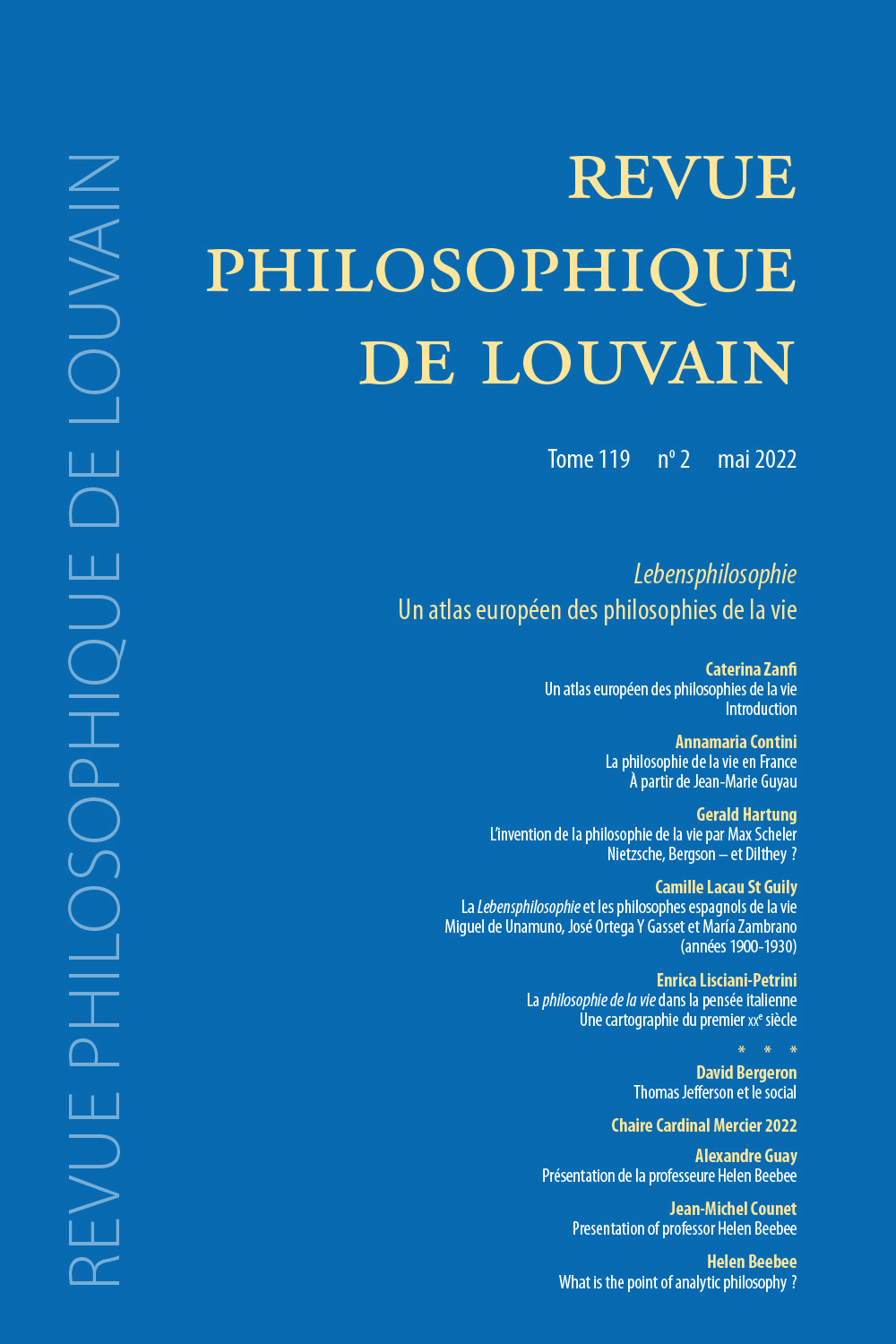 previous article in this issue previous article in this issue | next article in this issue  |

Preview first page |
Document Details : Title: Le phénomène comme autre Subtitle: Le «rien» dans la phénoménologie heideggerienne de l'inapparent Author(s): GOURDAIN, Sylvaine Journal: Revue Philosophique de Louvain Volume: 115 Issue: 3 Date: août 2017 Pages: 481-502 DOI: 10.2143/RPL.115.3.3278585 Abstract : Nous proposons ici de montrer qu’il existe dans la pensée tardive de Heidegger, à partir des années 1940, une figure du rien qui, quoique rarement mentionnée explicitement par Heidegger, permet de comprendre sa conception renouvelée de la phénoménalité et la place centrale de l’altérité dans cette conception. Le rien ne désigne plus uniquement l’être qui, dans son voilement, sous-tend et rend possible l’apparaître de l’étant, mais il se déploie en deçà de tout apparaître et en deçà de l’être qui ne se retire que par rapport à l’apparaître et en lui. Le rien fait signe vers l’inapparent, il est la trace de l’autre avant le même, cet autre que l’être, dans une lutte acharnée pour la phénoménalité, a refoulé dans le non-être. Mais il est aussi la trace de l’autre au cœur du même, cette altérité qui engendre l’oscillation et la déstabilisation de la présence et qui, si elle peut la mettre en danger, la sauve aussi de sa fixation sur soi-même. Comme tel, le rien s’incarne dans le vide qui habite au sein de tout phénomène et reflète ainsi une conception où l’autre n’est plus refoulé ni ignoré, mais placé au coeur. Dans cette «phénoménologie de l’inapparent», le rien n’est finalement pas tant l’autre du phénomène que le phénomène comme autre, le phénomène à l’image – inapparente – de son autre. Our aim here is to show that in Heidegger’s later thought, as from the 1940’s, we find a representation of nothingness which, though rarely mentioned explicitly by Heidegger, makes it possible to understand his renewed concept of phenomenality and the central place of alterity in this concept. Nothingness no longer signifies only being, which, in its veiledness, underlies and makes possible the appearance of beings, but it deploys itself beneath all appearance and beneath the being which only withdraws in relation to appearance and in it. Nothingness points to the non-apparent, it is the trace of the other before the same, that other which being, in a fierce struggle for phenomenality, has repressed into non-being. But it is also the trace of the other in the heart of the same, that alterity which engenders the oscillation and the destabilisation of presence, and which, if it can endanger it, also saves it from its fixation on itself. As such, nothingness is embodied in the void that dwells in every phenomenon and thus reflects a conception in which the other is no longer repressed nor ignored, but given key importance. In this «phenomenology of the non-apparent» nothingness in the final analysis is not so much the other of the phenomenon as the phenomenon as other, the phenomenon in the – non-appearing – image of its other. |
|


